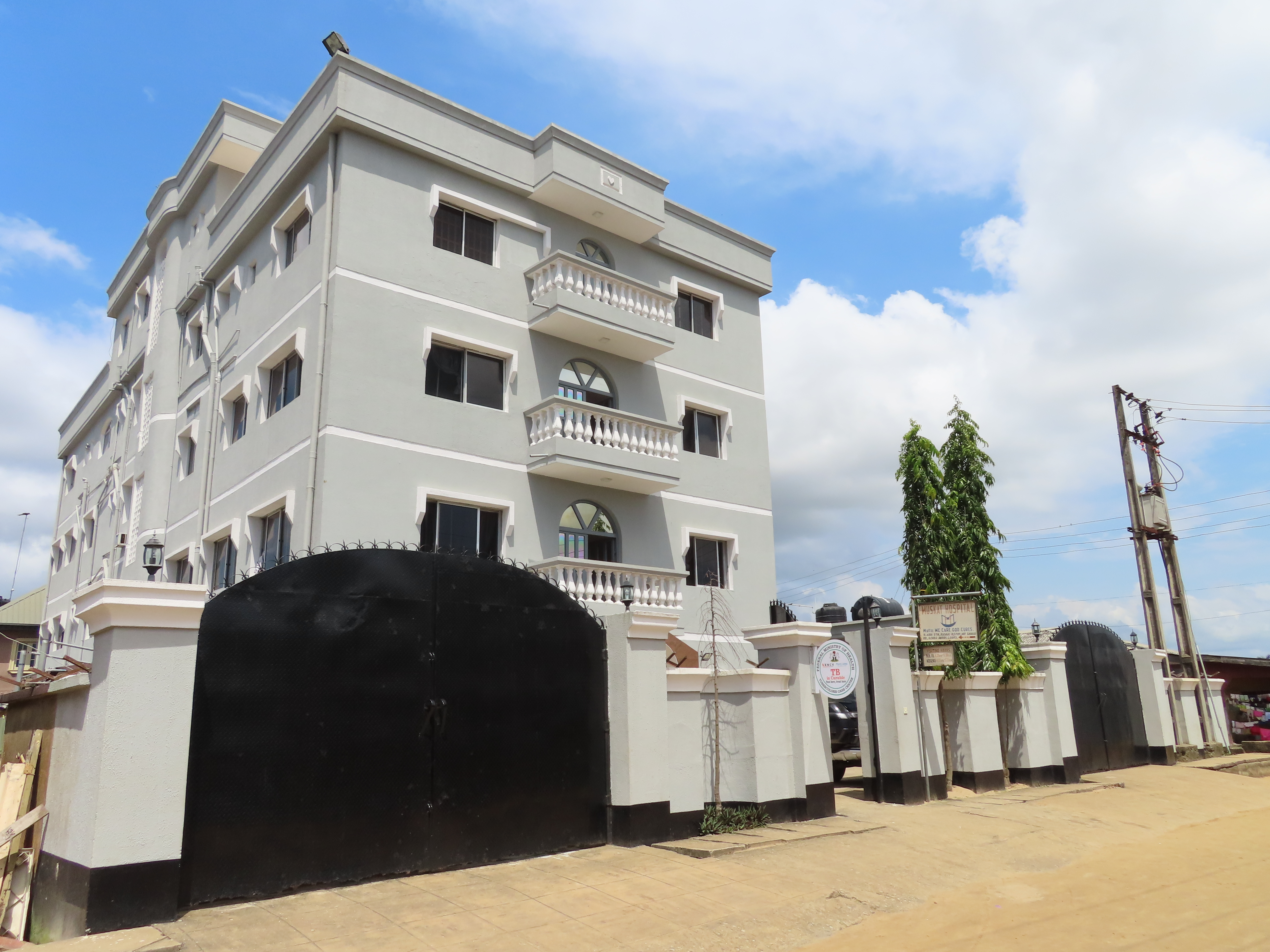Lack of management capacity in low- and middle-income countries will continue to make implementation of even the best development programs challenging. A sustained focus on management turnarounds by the private sector and global development partners may be the intervention required to accelerate improvement.
Jan. 8th, 2020 Author’s Update: As of January 8, 2020, neither Dr. Akinjide Adebisi nor I are in any way associated with the operations of CarePoint Hospital Ojo or any other facility under CarePoint Management and its parent company, Africa Health Holdings. The treatment and outcomes of any patient from that date forth is fully and solely the responsibility of CarePoint Management and its related parties.

In the Ojo local government area of Lagos, Nigeria, there stands a 40-bed secondary care hospital situated on a relatively quiet street within a low-income community. Located just off the teeming Lagos-Badagry expressway, about 45 minutes outside of the bustling epicenter of Africa’s most densely populated metropolis, there is nothing particularly remarkable about the hospital when looking at it from the outside. Perhaps the paint on the façade of the four-story building is relatively cleaner than other hospitals in the area. Perhaps its business signs are marginally more prominent relative to other health facilities. Nonetheless, such trivial elements alone do not explain the fact that over the past two years CarePoint Hospital Ojo has effectively improved its quality of care, affordability of care, and growth of new patients much faster than any other hospital in the region, all as the result of a management changeover.
Taking a look at the numbers, the hospital turnaround led by Dr. Akinjide Adebisi with a team of turnaround professionals has proven impactful. Compared to two years earlier, under the helm of the previous physician-owner, CarePoint Ojo has attracted thousands of new patients, revenue has more than doubled, and margins are well into the black after years of losses. Particularly, in terms of care quality, few hospitals in Sub-Saharan Africa have advanced so rapidly to a higher level on the SafeCare Accreditation journey. In just 12 months, CarePoint Ojo jumped from a Level II directly to a Level IV, through targeted interventions under the supervision of quality improvement specialist Odunayo Olomolehin, a registered nurse and midwife. The team monitored patient safety measures, attended to infrastructure obstacles that affect clinical effectiveness, and continuously held educational and human capital improvement activities. Within the hospital’s catchment area, local traditional birth attendants have partnered with the hospital on community engagement, skills trainings, and patient referrals for procedures on complicated cases. CarePoint Ojo has grown from being a low-quality of care, underperforming provider—which is all too prevalent in low- and middle-income countries (LMICs)—to being a preferred provider marching up the quality improvement path toward achieving both international quality accreditation and the trust of its surrounding local community.
Same physical structure. Same difficult environment.
New ownership structure. New management processes.
The turnaround of CarePoint Ojo is just one example of the impact that proper corporate management can have on the health outcomes of a large low-income community. There exist many hospitals across Africa that are poorly managed by physician owners who lack the knowledge and management skills to run them effectively. The prevailing approach to strengthening health systems on the African continent focuses on programmatic verticals, with a preference for working within public facilities via government- or partner-led implementation. Yet, there are thousands of both public and private hospitals and clinics which are either operating well below a critical quality level or simply lying fallow. Dramatically improving how such facilities function from sub-par standards up to the minimum results seen for turnarounds like CarePoint Ojo could potentially revolutionize entire health systems across LMICs.
The social, political, and economic environment CarePoint Ojo sits in is not different from that of the typical hospitals and clinics in growth markets such as Nigeria. While the development community’s efforts over the last decade have improved the state of healthcare provision in many LMICs, there is still much to be done in terms of both health outcomes and institutionalizing capacity. Despite past successes, the approaches currently being taken to address these issues have become increasingly stale and trite with real questions regarding impact. In the face of stagnation, both local and international stakeholders, must explore innovative approaches to develop long-term sustainable and effective health systems.

Development Verticals Without On-Ground Capacity
Despite the hundred of millions of dollars that have been poured into health systems in LMICs over the past ten years by partners and governments, it is unclear why the vast majority of health systems remain underdeveloped. Vertical programs have made a positive impact on maternal and child health, HIV/AIDS, polio, tuberculosis, malaria, and a number of other conditions. However, the cost-effectiveness and sustainability of many programs is often questionable. As research on development assistance has attempted to make sense of persistent implementation failure, three causal factors have been brought to light[1].
- Technical Insufficiency: the machinery of development often champions progress via the importation of standard “cookie-cutter” responses to known problems, which encourages standardized approaches to problems that often have different underlying causes;
- Administrative Inanity: on-ground governments’ and implementation partners’ inability to effectively put in place the systems, people, and processes required for the successful execution of projects or programs, creating a “mismatch between the expectations and the actual capacity of prevailing administrative systems to implement even the most routine administrative tasks;”[2] and
- Operational Incapacity: the “inability of the employee to perform the work s/he was hired to perform, the fault of which cannot be attributed to either the employee or the employer”[3].
In isolation, any of these three factors alone would make it difficult for programs and projects to achieve their impact objectives. Even in the absence of technical insufficiencies, perfectly constructed development programs, time and again, still fall victim to administrative inanity and operational incapacity. Within the global health field, many well-structured programs have fallen apart for lack of local or state-level competence on how to implement the nuances of the program. More often than not, much of the burden for day-to-day activities falls on frontline health workers, without adequate support from administrators or program partners who were meant to fill existing voids.
While the programs and interventions that have been created through decades of development interventions have spurred meaningful progress across the core pillars of development and public health, persistent underlying capacity and management execution challenges continue to hinder the growth and development of many health systems. At the core of these issues, there is a fundamental gap between perception and reality of on-ground management capacity.
Unfortunately, the necessary changes cannot happen overnight. Adequate health financing won’t suddenly arise tomorrow. Expertly trained health workers won’t be ready next week. Universal Health Coverage (UHC) is not coming this month.

A Management Intervention to Combat the Chaos?
So, what is to be done in the meantime? As a play on the words so often heard in many low- and middle-income countries: “we will manage.” Health facilities across Africa must insert excellent management systems and processes in order to attain the necessary cost and quality levels required to dramatically improve health outcomes. Providers of healthcare goods and services must implement management tools as work-arounds for the structural and institutional deficiencies faced in difficult environments. Rather than solely funneling all development financing through governments and implementation partners, creating mechanisms through which competent facility operators can scale their impact and share their learnings would blaze a trail toward system-wide success. Over time, substandard health facilities can be transformed into high performers if the practices of good managers are replicated and scaled across systems.
What might effective management change for health providers in Africa look like? At its core, it would mean managers and administrators create an environment which allows clinicians to focus on delivering the best possible health goods and services. It would mean strong management capability and continued education that spans across operations, finance, human resources, marketing, and technology to ensure all parts of an organization’s health-related goods and service delivery is timely, effective, efficient, affordable, and of adequate quality. At scale, effective management often presents itself as a private chain or franchise of facilities which are centrally managed through a common core team. In India, Narayana Health has established itself as a leader in large scale, cost effective, quality cardiac care delivery through its chain of exquisitely managed centers. In Argentina, Sistema Ser is using targeted management practices to successfully provide high-quality gynecology services to tens of thousands of poor rural women a year, at a fraction of the market price.
Though the benefits of effective management teams are obvious, the road to getting from the current state to a future with well-structured health facilities is riddled with potholes. Few good operators exist, making it hard to find capable teams to implement successful turnarounds. A dearth of internationally competitive educational institutions creates human capital deficiencies. Minimal collaboration exists between providers of healthcare goods and service across the value chain. If impactful change management is to take place in African health systems, more needs to be done to address these issues. Nevertheless, it is possible for countries across Africa to achieve the ideal health systems that are critical for better health outcomes and economic growth. As more effective policies are being developed and new public and private health facilities are being built, large-scale management turnarounds of existing underperforming facilities can improve care quality and affordability, helping to create a path toward achieving world-class health outcomes.
[1] Mohapatra Sadhu Charan and Sengupta Paramita, Health Programs in a Developing Country-Why do we fail?, Health Systems and Policy Research, 2016
[2] Lant Pritchett, Michael Woolcock, and Matthew Andrews, Capability Traps? The Mechanisms of Persistent Implementation Failure, Center for Global Development, 2010
[3] https://www.golegal.co.za/dismissal-operational-incapacity/





